Texas landowners looking for advice and assistance in stewarding their property have no shortage of choices. There’s Texas Parks & Wildlife Division (TPWD), Natural Resource Conservation Service (NRCS), US Fish & Wildlife Service (USFWS), Texas A & M Forest Service (TFS), various Wildlife Management Associations (WMA) and more. Abbreviations spew forth like a self-righteous flame thrower. Each of these organizations have programs focused on helping the local landowner. It can be overwhelming, like a Third World mother seeing for the first time the overstuffed isles of an American supermarket. Still, despite the generous selection of these organizations, sometimes a perfect match can be hard to find. What do you do when that happens? You do what the Wildlife Habitat Federation (WHF) did—you create your own organization!
Jim Willis retired after a distinguished career in the U.S. Foreign Service in 2005. As new retirees often do, he purchased some land in the Upper Texas Coastal Plain near Cat Springs, Texas to practice the art of gentleman farming. Problem was, like so many others, his land had been overgrazed, depleted and was devoid of wildlife. He wanted quail on his land. Much of the gamebird population in Texas had long ago been driven out by the systematic loss of habitat to ranching, agricultural conversion and urban sprawl. None of the organizations he approached seemed to be able to talk quail so that’s when he decided to become the co-founder and President of the Wildlife Habitat Federation (WHF).
The mission of WHF sounds appropriately heady and uses words like “dedicated,” “restoration” and “management,” but it’s all just euphemism for helping folks restore native grass prairies. Seeds, from both native grasses and forbs, provide much needed food for Bobwhite quail and other upland wildlife. Natural prairies also provide shelter and nesting grounds. As our original native prairies were replaced with monoculture exotic grasses—like King Ranch Bluestem, bermudagrass, or bahia grass—wildlife populations have decreased. It was time for a little push back!
Jim started small, working to bring just 220 acres back to native grasses. It was a daunting task, especially with traditional farm equipment. WHF is structured as a cooperative, where participating landowners with common goals go in together to help each other. As the WHF gained experience, they reached out to nearby landowners, persuading them to join.
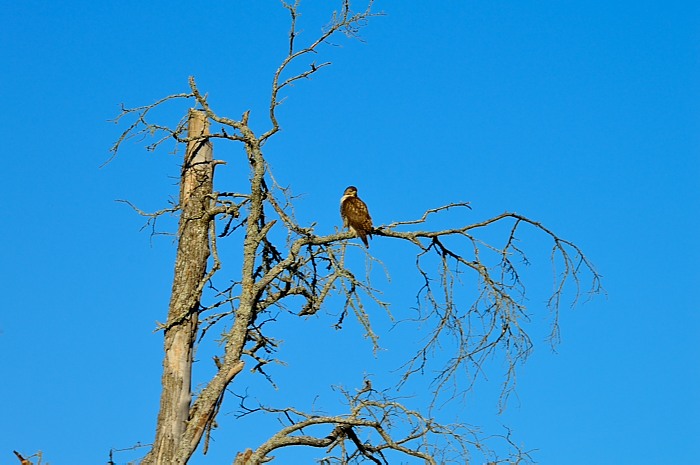
The idea was to restore small areas of habitat and try to connect them (the opposite of habitat fragmentation). Texas A&M University researchers discovered 31 species on the original 200 acre test plot after 5 years of proper follow-up management. Eventually the endeavor resulted, all told, in a corridor of 40,000 acres that connected all the way to the Attwater Prairie Chicken preserve. As success began to build, the WHF reinvested in specialized technology while staying close to Texas A & M research, documenting what worked and what didn’t.
As with most businesses, there’s a tipping point where synergies evolve and momentum builds. As a non-profit, WHF became eligible for grants and other funding sources, making it easier to buy equipment, do effective outreach and engage other local conservation organizations. They were on a roll!
Today, the WHF consults with landowners and lessees, sharing information, doing assessments and offering specialized equipment and on-the-ground physical assistance to those interested in converting land to native grasses and forbs. Site Assessment Reports include plant and soils analysis, a prescription for how to accomplish the conversion and an estimate of expenses to do the job.
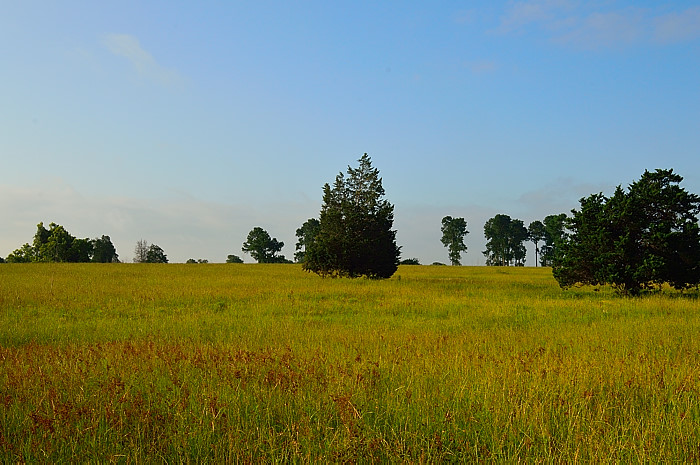
Finding localized native seed stock is a big part of WHF’s business model. They search for relic tracts of land that have naturally occurring native prairie plant species. Such locally sourced seeds contain the germplasm that is adapted to grow in a specific region of Texas. Seeds are also harvested from previously restored native prairie tracts. This is another win-win for landowners looking to perpetuate and maintain their native prairie habitat—using their own plantings to source expansion.
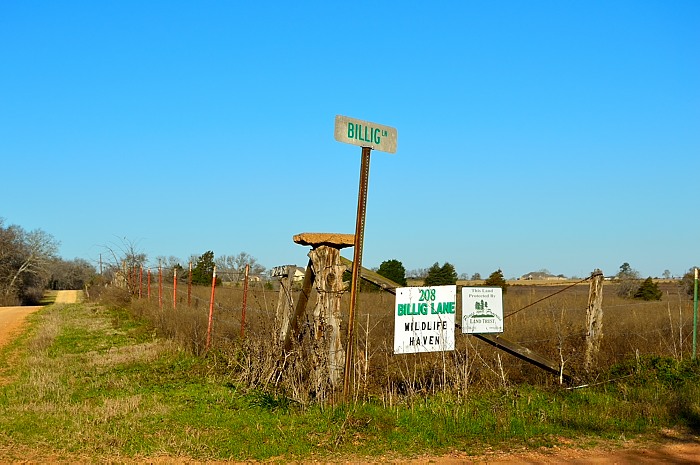
There is an ongoing WHF cooperative project with one of our chapter partner agencies, Pines and Prairies Land Trust (PPLT). Billig Ranch, a PPLT-owned property east of Bastrop, serves as an experimental and research site. The vast ranchland is in the process of conversion from a purely agricultural focus to that of a mecca for wildlife. The plan is to open it up for various educational efforts as well. Conversion to native grasses is a critical component of the plan.
To be sure, PPLT works with most of the conservation agencies described earlier (and more), but when it comes to native grass conversion, WHF is the organization of choice. WHF was able to plant about 100 acres at Billig in big bluestem, two varieties of little bluestem, sideoats gramma, green sprangletop, Indiangrass and two varieties of switchgrass.
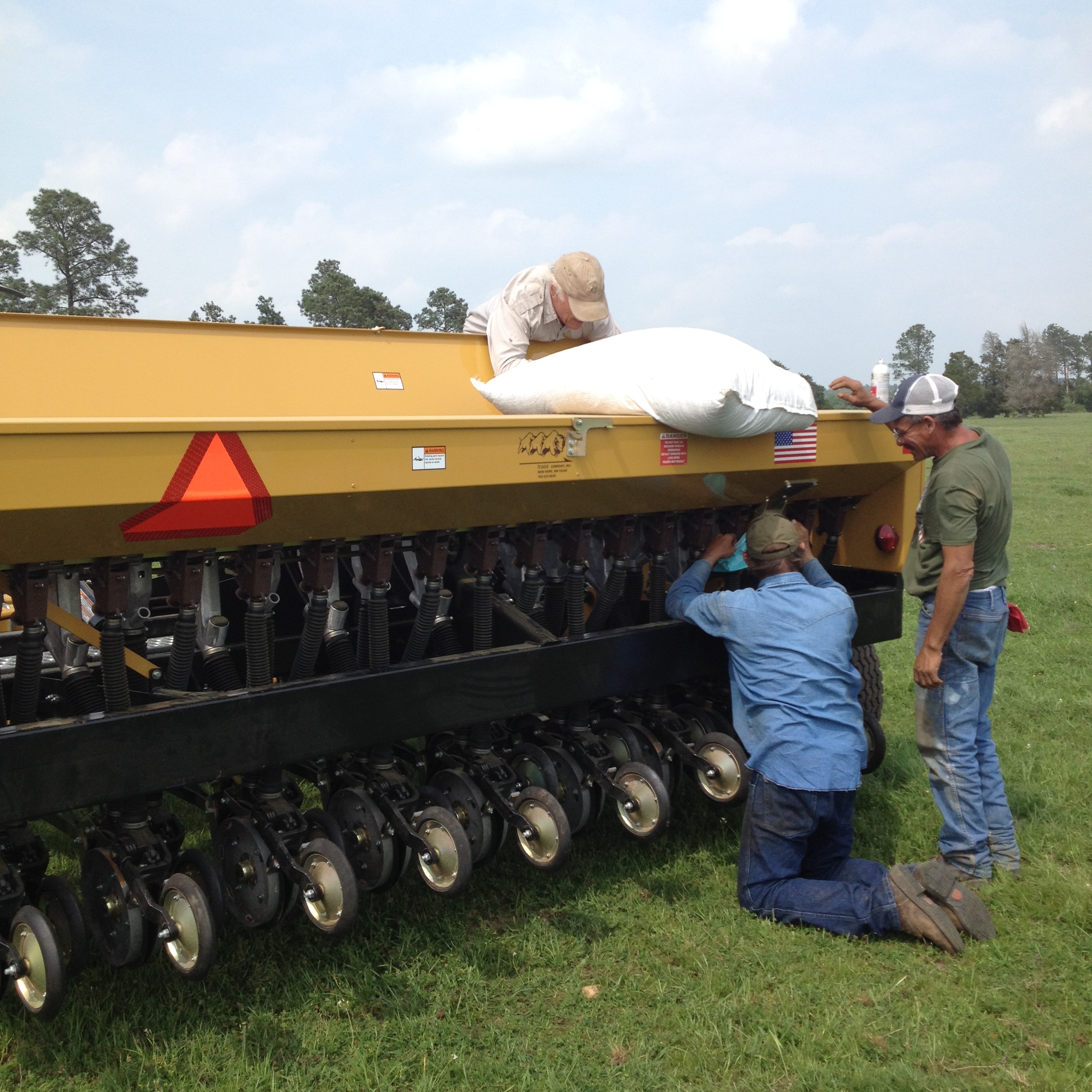
The equipment used was a 12.5 ft. Truax no-till seed drill, an implement which has coulters in front to cut through stubble and litter, double disk openers to open a trench in the soil for the seed to drop into, depth bands and hydraulic controls to regulate the planting depth, and press wheels to insure good seed-to-soil contact. The idea is to plant at just the right depth without costly seed bed preparation. Not only does this save a lot of time and expense, it also provides for accurate seeding rates, precision seed placement and minimal disturbance. It happens with little loss of soil moisture and nurturing organic material too.
Planting is just the beginning of the conversional long journey, however. Persistence and active land management are crucial to converting monoculture lands to native grasslands. Hardly ever do the new grasses make a dominant stand without intervention. Not only is there the question of rain or lack of it (and other seasonal weather variations) but “God don’t allow no empty space” . . . wherever there’s land and nutrients, there’s lots of plants fighting to survive.
Invasive species will be difficult to control if not sprayed precisely when these plants are growing most actively. Some invasives (which have lain dormant for years) may germinate after competition is reduced by the first herbicide treatment (especially if they get a jump-start from fortuitous rains). The bottom line is, early successional natives may not be able to compete with the early successional invasive species. If that happens, the game plan must change: selective herbicides, controlled grazing and prescribed burns would need to be used at just the right times to give natives the needed edge over invasives. Because some natives take five or more years to germinate, this becomes an endurance contest, or outright war. The point is: several battles may
be required to win this war!

Billig Ranch is PPLT’s first major restoration effort. The Billig experience will serve as an experimental clinic for other rehabilitation projects. Another major goal is to create a healthy savannah to support a diversity of insects, birds, herps and mammals—to include enhancing survivability of the endangered Houston toad. Plans call for monitoring the impact on local wildlife populations—plenty of opportunities here for LPMNs. Finally, hidden somewhere in here is a meaningful educational tool for both organizations and individuals interested in studying this model for environmental sustainability.
So we will see how the project at Billig Ranch progresses. What we do know is that Jim Willis’ crew set the stage for a sustainable natural ecosystem to emerge. You can watch a You-Tube video about the WHF and how they are pushing back at: https://www.youtube.com/watch?v=r9Ej37r12-M . The organization’s website can be found at: http://www.whf-texas.org/ and they’re just down the road from where you live.


